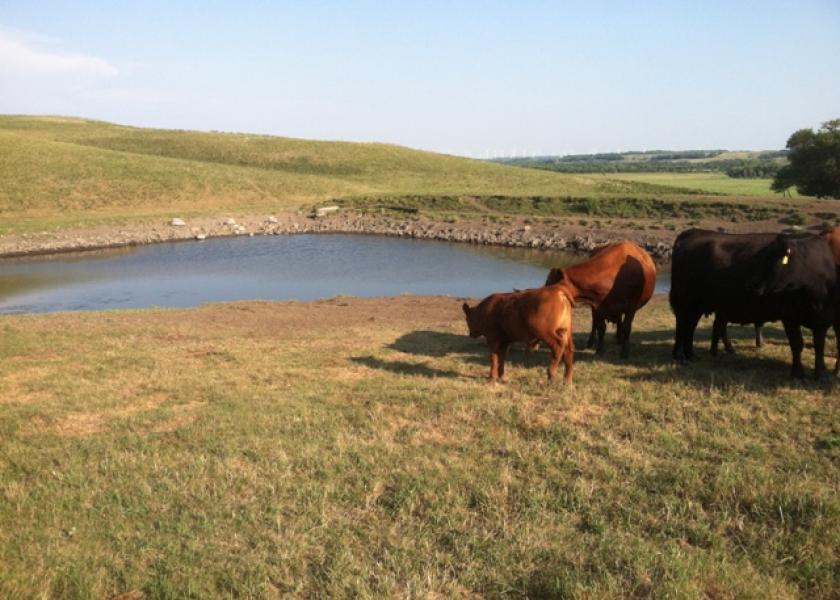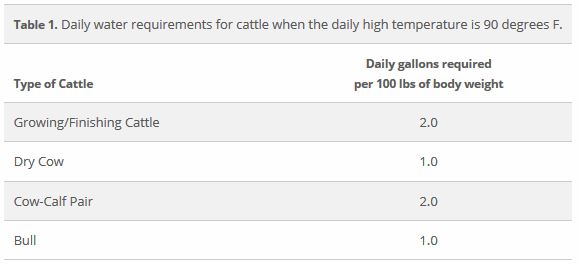Beef Cattle Health Linked To Water Availability, Quality

Water availability and quality are a big deal for cattle on pasture. In summer, that's even more the case.
Water requirements can double when temperatures increase from 50 to 95 degrees F, according to a University of Georgia Extension’s bulletin, Water Requirements and Quality Issues for Cattle (https://bit.ly/2Lv5iBE).
Table 1 shows the water requirements at a daily high temperature of 90 degrees F for various classes of beef cattle.

Water quality is equally important to availability and is often overlooked or undervalued.
The Noble Foundation, in a Drovers article, cites a study conducted in Saskatchewan that “identified a 9% to10% increase in weight gain of steers and calves drinking from water pumped into a trough versus those that drank from a pond. Similar studies have observed as high as a 16% increase in gains for stocker steers with access to clean water.” (https://bit.ly/2Lynvys)
Performance issues can occur when ponds, tubs or other open containers are contaminated with manure, dissolved solids, nitrates, algae and sulfates.
“The trouble with that open water is it's also a red carpet to rodents, raccoons, skunks and birds, and they're all disease carriers and can put cattle at risk,” says D. George Anderson, owner of Bar-Bar-A, a company that produces automatic livestock drinkers.
At the very least, Anderson says cattlemen need to dump water from open containers on a weekly basis and clean them periodically.
“Yes, it’s a hassle and work, but you don’t want cattle getting diseased or exposed to harmful elements and bacteria,” he says.
Ponds benefit from more strategic management. Cattlemen relying on pond water can benefit from an overall farm management plan that determines the layout of pastures, water access point locations and cross-fencing, notes Dirk Philipp, associate professor-animal science, for the University of Arkansas System Division of Agriculture.
"A plan will determine the location of water access points for years to come and help prolong healthy stock and pastures," he says. (https://bit.ly/3cEjg00)







